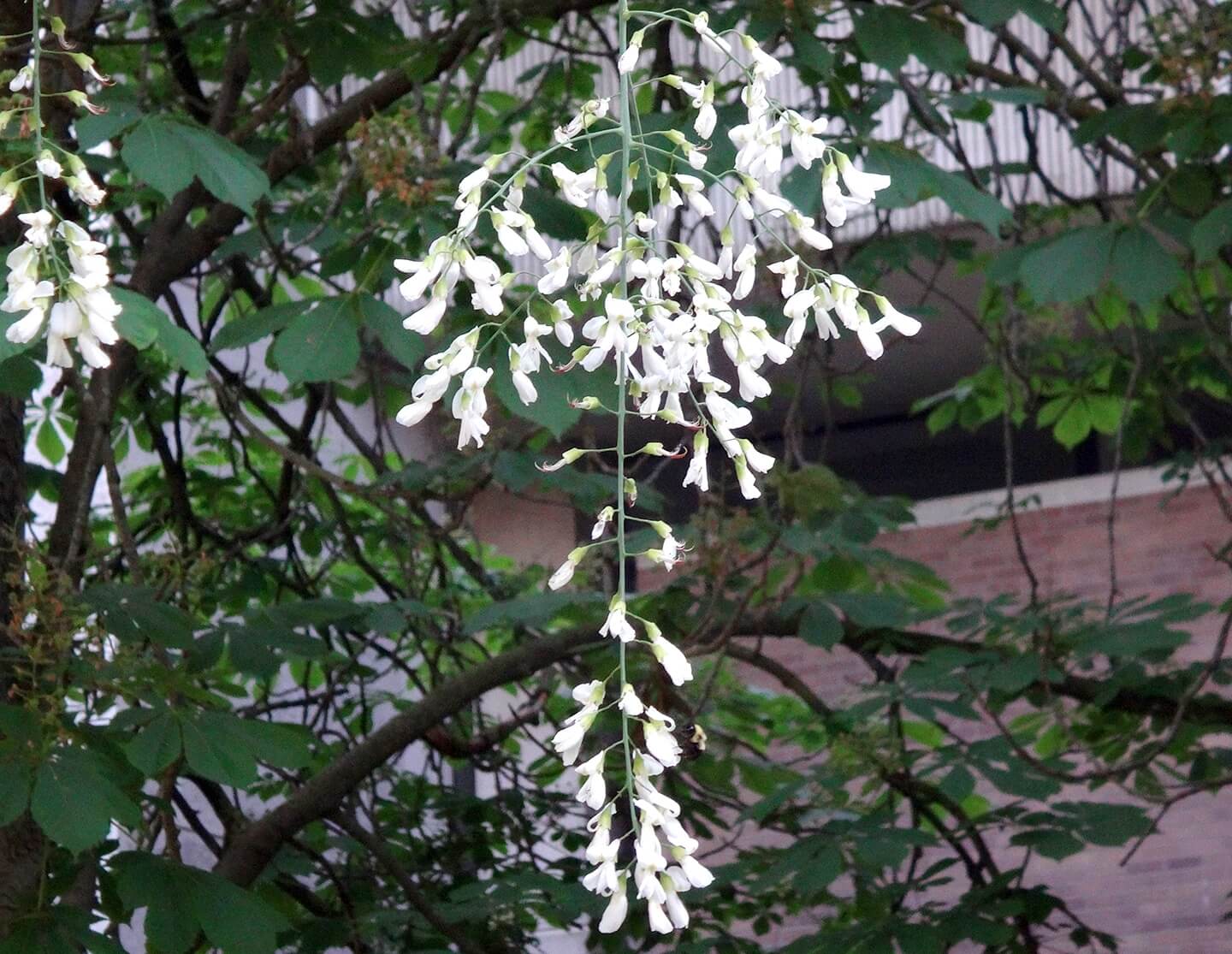The beloved old tree in our backyard is dying. An American Yellowwood– Cladrastis kentukea– it was probably planted at the time our house was built, over 125 years ago. At 55 feet tall, 80 feet wide and with a circumference of 16 ½ feet, its scale is remarkable. I am dreading the final goodbye.
When my children were young, they loved to climb our tree and sit on a particularly large sweeping branch. They called it the fairy tree, because they said they heard voices inside the trunk. A visit from an arborist determined that the “voices” were coming from several families of squirrels, and that the tree was no longer safe to climb.
Now that my children are grown and no longer climb trees, I enjoy watching other creatures inhabit our tree. It is home to large numbers of squirrels, birds, snakes and insects. Every other year, in early summer, the tree is covered with fragrant panicles of white wisteria-like flowers. When this happens, the tree literally hums with the sounds of bees and other insects enjoying its pollen and nectar.
A neighbor once offered an unsolicited recommendation that we take down the tree and open up the lawn. I know he meant well, but he didn’t understand that the tree and lawn are not equivalent. Unlike the lawn, our tree doesn’t require watering, mowing, raking, or the application of fertilizers or pesticides. Our tree grows and thrives without any help from us. In return for our limited contributions, the tree gives back so much.
As we confront the effects of increased carbon in the atmosphere, large trees, like our Yellowwood, play a vital role: their tremendous biomass is made up almost entirely of carbon that they pull from the air. The larger the tree, the more carbon it holds. Trees also cool their environments, including the houses they shade.
Native tree species are especially valuable. Plants and animals native to North America have evolved together over hundreds of thousands of years, and consequently have developed a mutual reliance on each other for food, shelter and reproduction. In the spring, insects lay their eggs on native plants; birds migrating through the area feed their young the larva of these insects. In the summer, the insects pollinate the plants, and in the fall, migrating birds eat the resulting fruits and spread the seeds to begin the virtuous cycle once again. The plants, insects, and birds are linked. Simply put, where there are native plants, there is an abundance of life.
Non-native trees such as Kousa Dogwoods, Star Magnolias, and Japanese Maples are beautiful and do well in our climate, but you will not see as many birds or insects in these trees, because they do not know how to use them. Native species such as Pagoda Dogwood, Sweet Bay Magnolia, and Fringetree are overlooked native alternatives that are equally beautiful and support greater biodiversity.
When we first moved into our house, we planted several swamp white oaks, red maples and flowering dogwoods, all native to Massachusetts. Though still adolescents, they have brought life to our front yard. It will take 50+ years for these trees to mature, and I will not be here to experience their full grandeur. So the saying goes, “The best time to plant a tree was 20 years ago. The second best time is now.” Although our Yellowwood is a bit bedraggled, and lopsided from broken branches, it is still full of life. I am seeing it in all its glory, and that is why I am reluctant to see it go.



